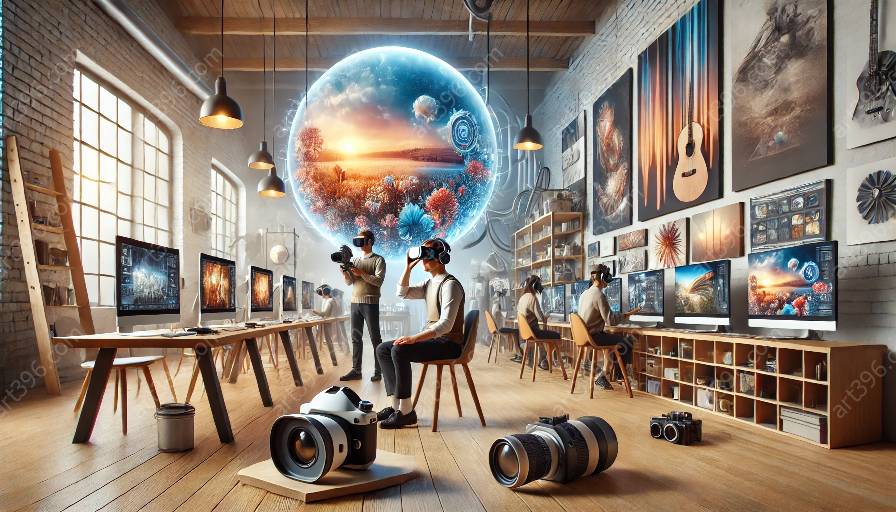The emergence of virtual reality (VR) has significantly expanded the narrative possibilities in visual art and design. This innovative technology has opened up new avenues for creative expression and storytelling, pushing the boundaries of traditional art forms and creating immersive experiences that captivate audiences in unprecedented ways.
Virtual reality art, an exciting and rapidly growing field, leverages the power of VR to transform the way artists and designers engage with their audiences. By integrating virtual reality into their creative processes, artists are able to craft interactive narratives that transcend the limitations of traditional two-dimensional art forms. Through the use of VR technology, artists can transport viewers into alternate realities, enabling them to explore and interact with art in ways never before imagined.
The fusion of virtual reality with photographic and digital arts has also revolutionized the way visual narratives are constructed and conveyed. With VR, photographers and digital artists can immerse viewers in rich, multi-sensory environments that stimulate the imagination and evoke powerful emotional responses. This enables them to create dynamic, interactive narratives that blur the lines between fiction and reality, inviting audiences to actively participate in the storytelling process.
One of the most compelling aspects of virtual reality art is its ability to break free from the constraints of physical space and time. Through VR experiences, artists can guide viewers through non-linear narratives, offering multiple perspectives and branching storylines that adapt to individual interactions. This level of engagement and interactivity allows for personalized experiences, where each viewer can shape their own unique narrative journey within the virtual environment.
Furthermore, virtual reality has the potential to democratize art and design by making it more accessible and inclusive. Through VR exhibitions and installations, artists can reach global audiences, transcending geographical boundaries and providing an inclusive platform for cultural exchange. This democratization of art fosters a more diverse and interconnected art community, offering new opportunities for collaboration and creative expression.
As technology continues to advance, the narrative possibilities in visual art and design through virtual reality are expected to expand even further. Innovations such as augmented reality (AR) and mixed reality (MR) are poised to reshape the creative landscape, offering artists and designers unprecedented tools to craft immersive, interactive narratives that defy traditional conventions.
In conclusion, virtual reality has unlocked a new frontier of creative possibility within the realms of visual art and design. Its compatibility with virtual reality art, photographic, and digital arts has ushered in a renaissance of storytelling, empowering artists to push the boundaries of narrative expression and redefine the way audiences engage with art. As VR technology continues to evolve, it promises to revolutionize the very essence of visual storytelling, offering infinite opportunities for immersive, interactive experiences that captivate and inspire.



















































